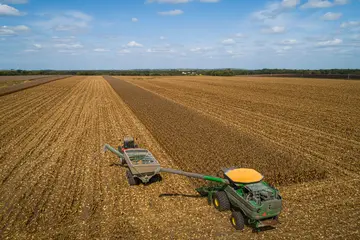Definition of a biological detergent
What makes a detergent biological?
Generally speaking, a biological detergent should contain natural ingredients and be gentle to the planet. More than just a claim, the term “bio” comes with a number of expectations from consumers, and specifications from regulatory authorities. It’s easy to get confused because there isn’t one common definition of the term in the home care industry. But how do you define and document sustainable sourcing? Or “biodegradable”?
Novozymes is on an ambitious journey to enable 100% biological detergents without compromising wash performance and cost. This article describes the six criteria defining what a “biological detergent” is, and what Novozymes believes it should be in the future.
Bio-based
Today, the term “bio-based” is widely used to refer generally to products made from biomass. The biomass may have undergone physical, chemical or biological treatment. However, manufacturers need to be aware of more specific definitions created by regulatory authorities.
The US department of Agriculture (USDA) defines bio-based as a “commercial or industrial product (other than food or feed) that is composed, in whole or in significant part, of biological products or renewable … agricultural materials or forestry materials.”
Sustainable sourcing
It’s true that ingredients coming from the petrochemical industry are inherently unsustainable. But it’s not always true that bio-based solutions are better. Just one example is exploitive palm oil production, which is both bio-based and quite unsustainable.
Manufacturers wanting a truly sustainable option must ensure that their ingredients come from a source "continuously renewed in nature within a short time span" as defined in the European standard EN 16757.
A variety of certification programs exist to create standards to document the sustainability of not only ingredients but also various supply chain systems.
The bottom line is that manufacturers and consumers who want sustainable solutions must be aware of both ingredients and the supply chain of products, and seek out recognized certification systems to the extent this is possible.
Safe for the environment
Even bio-based and biodegradable ingredients can be toxic for the environment. Novozymes believes that all ingredients should be assessed to determine whether their release into the environment is safe. A risk assessment should include both biodegradability and ecotoxicity to determine safety.
The European REACH program sets standards for both assessment and risk levels, defining safe "no effect" levels for release into the environment.
Safe to use
It’s a general requirement that consumer products are safe. But there are no unilateral global standards for determining safety of detergents. In fact, different countries and companies set safety standards at very different levels. And protecting the safety of employees adds even more complexity to the situation. For employees, the focus is more on ensuring safe working conditions than the inherent properties of the materials handled.
The European REACH program sets standards for exposure scenarios, defining safe "no effect" levels. REACH also defines how to assess exposure levels to determine whether the expected exposure is indeed lower than the safe level. Novozymes believes that proper application of the principles in REACH are a sound basis for safety.
While some countries and companies hold safety to a high standard, we believe it is important that the bar is raised. Safety assessments should be science-based and focus on assessing the specific exposure and risk from products and raw materials.
Biodegradable
Detergents are down-the-drain products, so direct recycling of the detergent ingredients is not an option like it is for the packaging. For detergents, we must rely on biology to "recycle" the ingredients for us. This biological cleanup can occur either in wastewater treatment plants or in the natural world.
The degree of biodegradability is key. If microorganisms can degrade ingredients completely down to minerals (mostly CO2 and water), then these components can become part of a circular system.
OECD standards and/or ISO methods set the benchmark for “readily biodegradable” to be at least 60% mineralization in 28 days. This is an ambitious target in the short run.
Novozymes has the long-term goal to ensure that no ingredient persists in nature. We want all ingredients to have primary biodegradability and reach 100% mineralization.
Furthermore, the ingredients should be readily biodegradable at both aerobic and anaerobic conditions (because wastewater treatment can occur at anaerobic conditions). The good news is that because naturally-occurring materials come from nature, normally they can be sent back to nature without harm.
This is why Novozymes believes that naturally-occurring materials that cannot meet the readily biodegradable benchmark should still be allowed, if meeting all other requirements. Also inorganic raw materials should be allowed if they are abundant in nature or readily degrade into materials that are abundant in nature (such as many salts).
Highly efficient
Generally speaking, laundry products with efficient performance are more sustainable than inefficient ones: the more product needed to obtain an effect, the more strain on raw material resources. Also needed are more packaging and transport (usually fossil fuel), and more waste is generated. All this assumes of course that performance can be matched with a higher dosage, which is not always the case.
Efficiency can also refer to detergent performance at lower temperatures. This is because heating wash water is one of the most CO2-heavy steps in the consumer laundry process.
Finally, efficiency can also refer to extending the service life of textiles. Using a tee-shirt longer is an inherently sustainable approach for society, given the large environmental impact of textile manufacturing in terms of water, energy and chemicals. So detergents should be efficient in removing soils, yet mild and protective of the textile.
The definition of a biological detergent detergent has many aspects, and the situation today can be enormously confusing for anyone seeking a truly sustainable product. Given the power of enzymes to do more with less, Novozymes believes enzymes are part of the solution. But enzymes can’t do it alone. Novozymes is eager to partner with companies who share the vision of creating 100% biological detergents – measurable across the different factors described here – without compromising wash performance or cost. Rethink the future.


